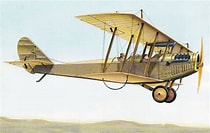Formality in the military varies from service to service and from outfit to outfit. Submarine crews wore civilian sweaters and shoes, but that would not be tolerated on an aircraft carrier with an Admiral aboard. Aviators were regarded by sea-going Navy men as rather cavalier and casual in their speech and manner. The difference between Airdales and Swabbies was further differentiated because aviation officers had slightly different uniforms. In addition to our aviation greens we also wore brown shoes with our khakis whereas seagoing officers wore black shoes. Brown shoe sailors therefore distinguished the aviation branch from the black shoe Navy.
Casual though we fly-boys might have been, the French Air Force astonished us with its laissez-faire manner. In 1967 a detachment of three squadron aircrews received orders to depart our deployed base in Rota, Spain, and fly to Nimes, France, where we became part of a joint anti-submarine warfare exercise conducted by the French Air Force. The French had their basic flight training field at the Nimes aerodrome. We were astonished to see that the French, although they had jets and modern aircraft, were using hand-propped spruce and fabric Jennys as their basic trainers. Landing at that base was like returning to World War One aviation history.

Most of the French officers spoke English and were very friendly, although casually so. Our senior officer was a lieutenant commander, not lofty in rank but deserving certain courtesies. We found it surprising their most junior officers seemed comfortable calling him by his first name.
The exercise we participated in involved French and American destroyers, two French submarines, and American aircraft. The French ran the show. The subs were challenged to transit the Med from one longitude to another, using all means at their disposal to avoid detection by ships and aircraft. A U.S. operation of that sort would have been highly organized in its conduct. The French, however, treated the exercise as if they had just planned it that morning and were happy to play it by ear. Our aircrews looked at each other in disbelief and we just shook our heads.
Safety was always first priority in such peacetime operations and fight-safety radio communication was of utmost importance. Should a ship or aircraft experience a problem and not report in, the exercise would be immediately put on hold and search and assistance became the main concern.
My crew’s responsibility was to search a far section of the exercise area. After arriving on station, we attempted to send our first flight-safety message back to the French headquarters. But got no reply. The radio operator continued his attempts for the next hour, even relaying high-frequency messages through distant listening stations. Still no reply. The time grew near when a U.S. managed operation would launch a search and rescue mission. At last the French operational commander came on the air, saying rather casually, “Yes, yes, we heard you, Airmail Twelve. Do not worry, the war is not over.”
What the heck was that all about?
We continued the exercise but ignored further communication attempts. Instead, we stayed in touch with our other squadron aircraft, which had experienced the same lack of response to their calls.
The squadron’s new wise-ass reply to any request became, “Do not worry, the war is not over.”
Incidentally, the two French submarines that were supposed to transit the area, decided they didn’t want to play and went ashore at Monaco. C’est la vie.
The submarines “decided they didn’t want to play and went ashore at Monaco.” It sounds to me as if they went on strike. C’est la greve.